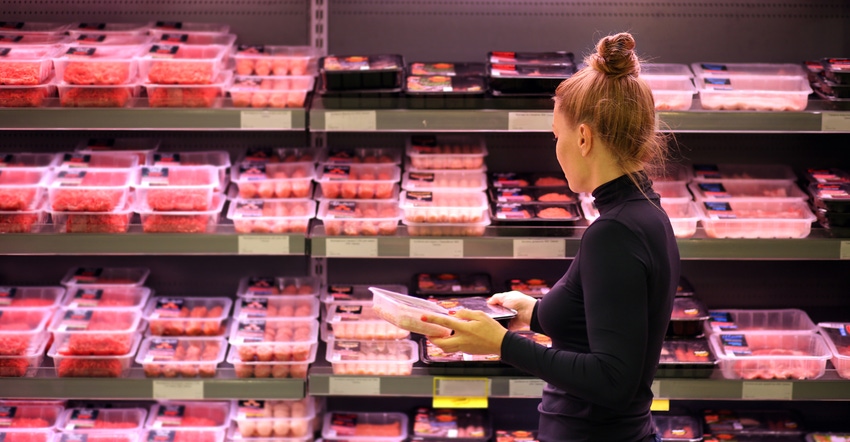The beef consumer of tomorrow is evolving
Changing consumer purchasing patterns for beef give cattle producers opportunities.

Consumers still like beef at the center of their plates, but their needs are evolving, explained Danette Amstein of Midan Marketing. By understanding those changing needs, cattle producers can adjust their production practices and marketing to better meet them, she added.
Amstein shared Midan’s consumer insights at the Kansas Livestock Association’s annual meeting in December. The first step is to understand the five different types of meat consumers.
1. Protein Progressives typically skew younger — are Gen X or Millennials. “They like our product,” Amstein said. “But they like to eat all the proteins.” They’re looking for an adventurous meal, and to keep them engaged with beef, we have to provide them that adventure, she added.
2. Family First Food Lovers are those who pay attention to the health and wellness product claims that they’re buying, “but their most important goal every day is to sit the family down at the table,” Amstein said. “She’s more interested in our natural and organic-type products that we have available to her.”
3. Aging Traditionalists are those loyal consumers of beef who don’t believe it’s a real meal until there’s a hunk of meat sitting in the center of the plate. “They aren’t really paying attention to all the hullabaloo; they just want a good steak,” Amstein said. They’re really important, but this is also a shrinking group, she added.
4. Convenience Chasers are focused on getting the meal to the table the quickest and least expensive way possible, Amstein said. They’re focusing more on value and efficiency; to keep them engaged within their tight attention span, beef marketing has to up its game. “We have to grab her attention as quickly as we can to keep her talking about beef, and keep her engaged with us,” Amstein said.
5. Wellness Divas, quite honestly, don’t want to eat beef, Amstein said. And if they’re eating beef, they’re looking for an extreme amount of claims on it, she added. They’re more likely to eat chicken and plant-based alternatives.
Postpandemic shifts
When the segmentation research was first conducted in January 2019, the largest group was the Convenience Chasers. But then the pandemic hit, and suddenly more people were staying at home and needing to juggle home schooling of their children, working from home, and just trying to find products on shelves and in the cases at their grocery store.
• Retail vs. food service. Before the pandemic, 59% of consumers were ordering takeout from a restaurant, she said. But when restaurants had to shut down, those consumers began purchasing more from retail. The higher-quality meat moved from the bulk food service sector to the retail sector, and consumers are still demanding it at the grocery store. That provides an opportunity for cattle producers selling direct to the consumer as well to garner more value for the beef products they sell.
• Newfound skills. Amstein said shoppers were forced to learn new cooking methods during the height of the pandemic. Air fryer purchases were huge, she added, and searches for new recipes grew. Today, 81% of consumers are still cooking at home, a huge behavioral change that cattle producers can capitalize on with education and marketing outreach efforts geared to that new chef learning new skills.
• Online purchases. Amstein said 57% of consumers reported they purchased meat and chicken online in March 2021. Before the pandemic, people would purchase groceries except their meat online for pickup or delivery — that they wanted to do themselves. “Then, consumers were forced to give up that privilege, and guess what?” Amstein said. “They kind of like it.” More than half of consumers are continuing to allow online services select their meat purchases, and that opens up an avenue for meat marketing.
• Flexitarians. These 19% of consumers eat meat, but they will eat other products as well. That number has doubled in the past year, Amstein said. To reach them, marketers need to emphasize “protein” on beef product packaging. “We’ve allowed the rest of the store to grab our word,” Amstein said. “We need to make protein like a neon sign on each package, because consumers are looking for it.”
The key takeaway for cattle producers is that transparency remains important, Amstein said. “It fosters trust,” she said. “Fifty-five percent of consumers believe it’s important for grocery stores and brands to provide information on where the livestock was raised and how it was processed.” They’re looking for storytelling right there in the store, so they can feel good about what they’re eating. Going forward, reaching consumers with authenticity is going to take many methods, from partnering with TikTok influencers to providing more information on the production process. This will ensure beef continues to be center of the plate for generations to come.
About the Author(s)
You May Also Like





